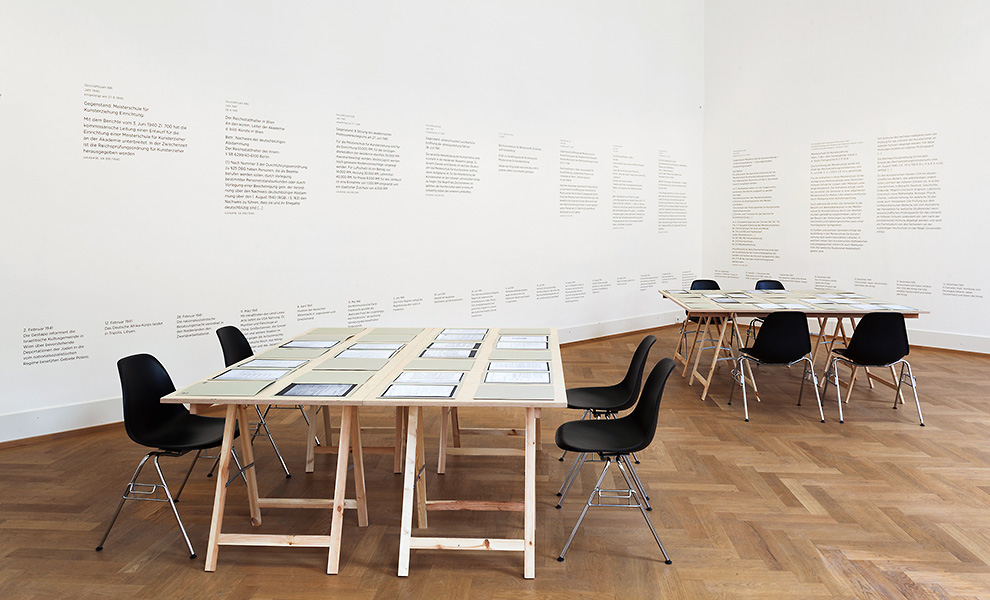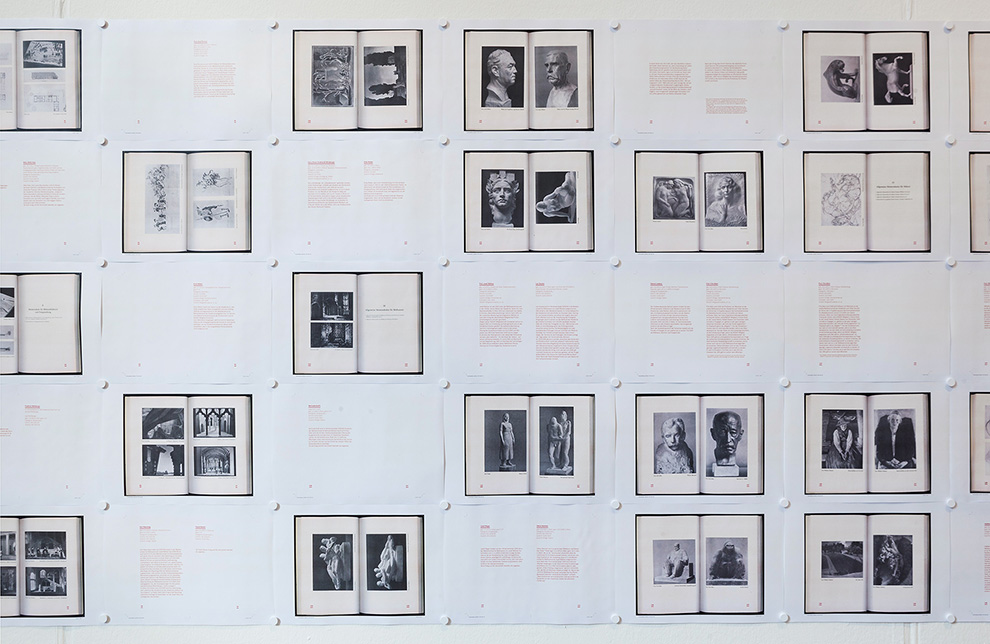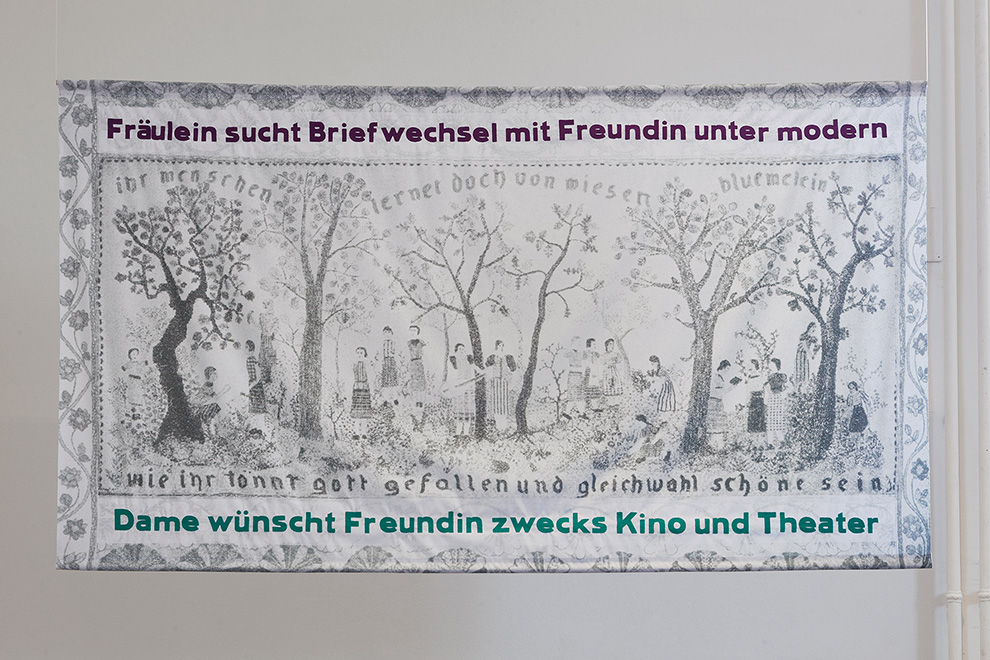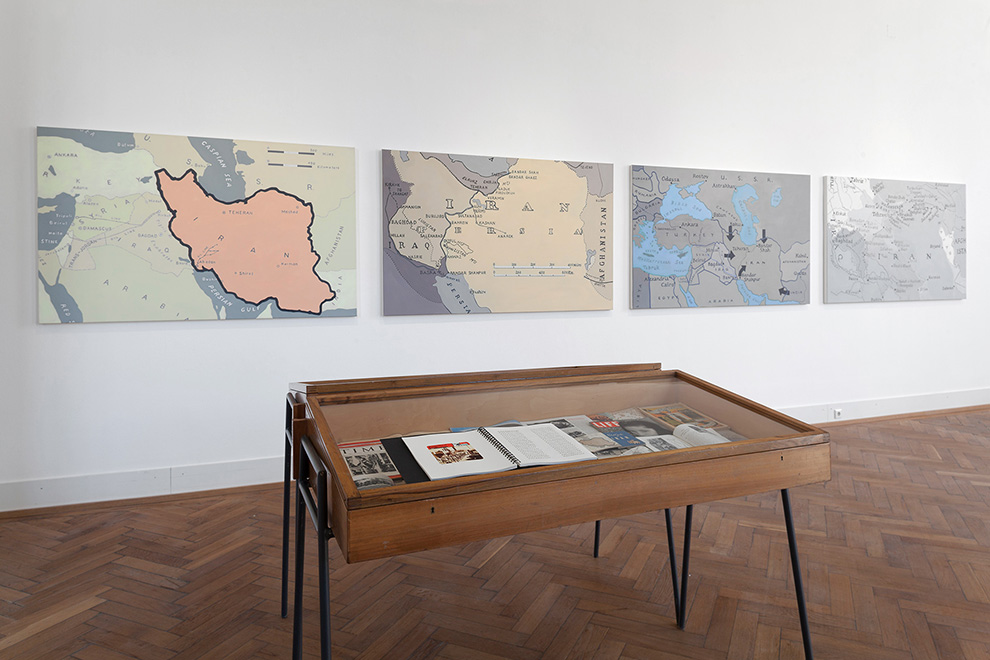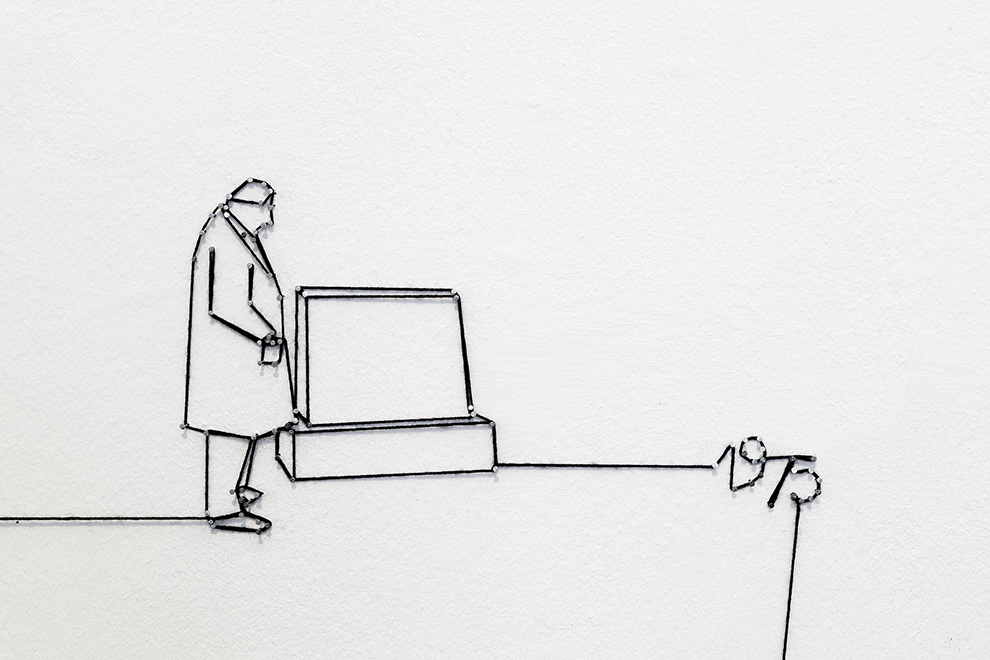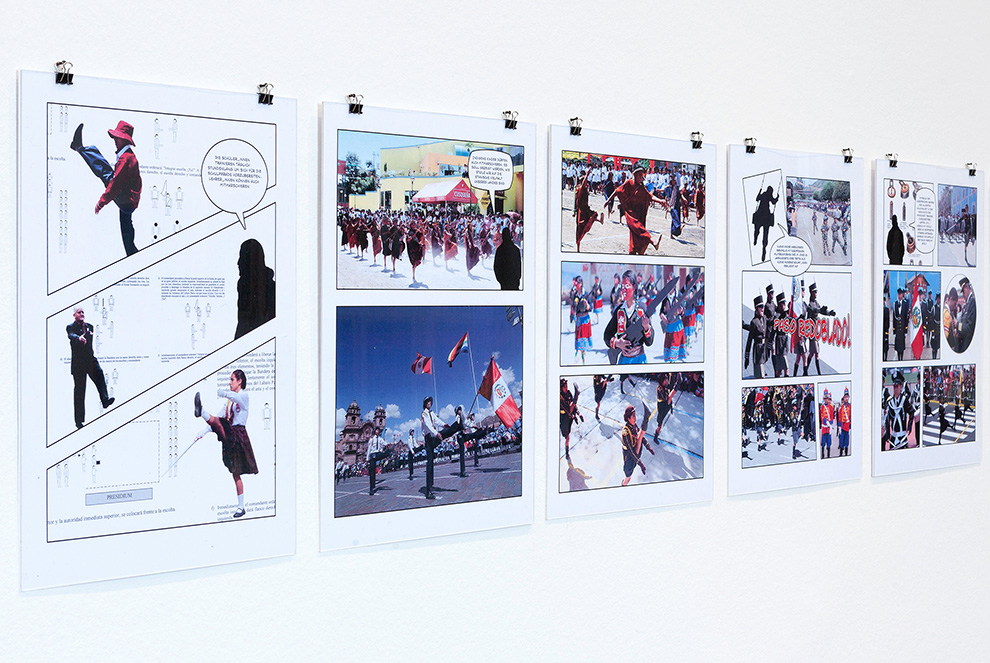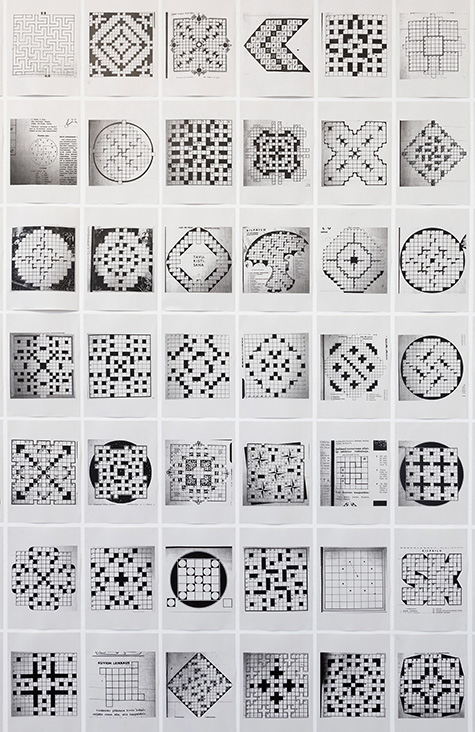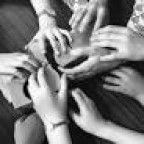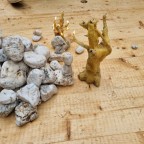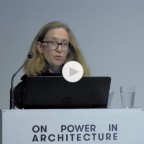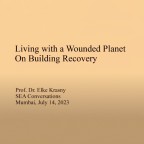UNCANNY MATERIALS
FOUNDING MOMENTS OF ART EDUCATION (2016)
A curatorial exhibition, research and education project
Opening | March 10, 2016, 7.00 p.m.
Exhibition dates | March 11–May 16, 2016
Academy of Fine Arts Vienna, x hibit, Schillerplatz 3 1010 Vienna
Opening hours Tue–Sun, 10.00 a.m.–6.00 p.m., admission free
Special opening hours March 28 and May 1, 5, 16, 10.00 a.m.–6.00 p.m.
Curators | Elke Krasny and Barbara Mahlknecht
Historical Research | Ina Markova, Rosemarie Burgstaller and Sophie Bitter-Smirnov, Assistance | Eva Maria Eisner, Exhibition Graphics| Alexander Ach Schuh
With contributions by Tal Adler/Friedemann Derschmidt/ Elisabeth Samsonow/Karin Schneider/ Anna Szöke/Niko Wahl, Anna Artaker, Eva Blimlinger, Ramesch Daha, Zsuzsi Flohr/Benjy Fox-Rosen/Eduard Freudmann/Eva Reinold/Luisa Ziaja, Lena Rosa Händle, Minna L. Henriksson, Belinda Kazeem-Kaminski, Gila Kolb, Martin Krenn, Ina Markova/Rosemarie Burgstaller/Sophie Bitter-Smirnov, Verena Pawlowsky, Birgit Peter, Sabine Plakolm-Forsthuber, Suely Rolnik, Dirk Rupnow, Hansel Sato, Anna Schürch, Sekretariat für Geister, Archivpolitiken und Lücken (Nina Höchtl and Julia Wieger), Bernadette Settele, Nora Sternfeld, Imayna Caceres/Pêdra Costa/Verena Melgarejo Weinandt from Wer hat Angst vor dem Museum?
Elke Krasny und Barbara Mahlknecht, Unheimliche Materialien. Gründungsmomente der Kunsterziehung, 2016
•
On 9 July 1941, the decree of the Reich Ministry of Science, Education and Culture in Berlin went out to the Academy of Fine Arts in Vienna to establish the “Master School for Art Education and the Training of Secondary School Art Teachers.” 75 years later, the history of the founding of today’s Institute for Education in the Arts remains largely inscrutable. This is the starting point for the curatorial exhibition, research and education project, Uncanny Materials: Founding Moments of Art Education. The exhibition shows how historians, artists and curators work with archival materials and raise questions of the politics of history and memory.
During the rectorate of Alexander Popp (Nazi Party member since 1935), teacher training at the Master School for Art Education under the leadership of Ernst August Mandelsloh (Nazi Party member since 1932) was based upon the ideological foundations of Nazism. Philosophy and ideology were required examination subjects. The formation of Nazi art education is documented in the following materials from the University Archives of the Academy: personal status sheets, lists of students, course syllabi, examination regulations, minutes of professorial council meetings, budgets, master school prizes and material procurement lists.
Study at the Master School for Art Education included artistic subjects, electives, crafts and academic subjects. Subjects included painting, graphic arts, drawing and watercolor landscapes, general history, history of German literature, crafts and needlework, as well as the didactics of drawing, art history and art appreciation. The Seminar Kunstbetrachtung (“Art Appreciation Seminar”) stamp makes it clear that the magazine Die Kunst im Dritten Reich (“Art in the Third Reich”), part of the holdings of the Academy library, had been used in the “training of art educators.” The editor of this magazine, which was published by the Nazi Party publishing house for the “monitoring of the entire spiritual and ideological training and education of the NSDAP,” was Alfred Rosenberg.
Based on 1941 documents of the University Archives of the Academy, the archival installation by curators Elke Krasny and Barbara Mahlknecht shows the personnel, physical, structural and ideological institutionalization of art education.
In 1941, the Nazi regime began planning the “Final Solution” and the systematic murder of Jews, Roma, Sinti, prisoners of war and political opponents. The German Luftwaffe attacked British cities. German troops marched into Greece and Yugoslavia. The German Wehrmacht invaded the Soviet Union. Theaters of war like Libya, Egypt, Tunisia, China, Japan, Thailand, Burma, Indochina and the Philippines, as well as the Anglo-Soviet invasion of Iran, the entry of the USA into the war and the war declarations by Latin American countries illustrate the global dimension of World War II in the year 1941.
For the artworks, the year 1941 is an essential reference point. Many of the activists and artists in this exhibition are former students of the Academy or work here today as instructors. The works articulate interventions in the memory of institutions, make reference to the normalization and disciplining of bodies through education, trace lesbian life during the Nazi regime, show the political involvement of women with Nazism and reflect current changes in “multidirectional memory” (Michael Rothenberg) as well as the importance of “migrants’ situated knowledge” (Ayşe Güleç) for the politics of history.
Artists: Anna Artaker, Ramesch Daha, Zsuzsi Flohr/Eduard Freudmann mit Benjy Fox-Rosen, Lena Rosa Händle, Minna L. Henriksson, Hansel Sato, Sekretariat für Geister, Archivpolitiken und Lücken (Nina Höchtl und Julia Wieger) und Imayna Caceres/Pêdra Costa/Verena Melgarejo Weinandt von Wer hat Angst vor dem Museum?
Anna Artaker, KOMMENTIERTES JAHRBUCH 1941, 2016 (detail)
Lena Rosa Händle, Mädchen unter Bäumen, 2016
Ramesch Daha, Unlimited History, 2013 (Installation view)
Zsuzsi Flohr und Eduard Freudmann, Ein Stein steht hier. Formationen des Erinnerns 1949–, 2016 (Installation view, detail)
Hansel Sato, Parallaxe, 2016 (Installation view, detail)
Minna L. Henriksson, Hidden, 2012/2013 (Installation view, detail)
[All photographs by by Lisa-Rastl © Akademie der bildenden Kueste, Wien]
•
On April 20 and 21, 2016, an international symposium with lectures, talks, and workshops will explore issues of institutional memory, National Socialist educational policy, the connections between politics of remembrance and artistic practices and question critically hegemonic histories in the field of art education.
Program
Wed, March 16, 2016, 4:00 p.m., x hibit
A Look Back into the Museum
Performance lecture with Imayna Caceres/Pêdra Costa/Verena Melgarejo Weinandt from Wer hat Angst vor dem Museum? (English)
A performative reflection on the role of the museum, its relation to historical wounds, othering, and dehumanization; and what is the role that the art education institution can have in breaking with historical continuities?
Tue, April 5, 2016, 1:30 to 5:30 p.m., x hibit
In Haunted Archives: (Post-)National Socialist Times, Decolonial Futures
Secretariat for Ghosts, Archival Politics, and Gaps (Nina Höchtl and Julia Wieger) Workshop (English)
By addressing the archive as a medium we attempt to work through its im/materiality. We invite participants to question the currency of National Socialism, colonialism and (de)coloniality in relation to specific archival materials from two rather different archives: the Archive of the Austrian Association of Women Artists VBKÖ and the University Archives of the Academy of Fine Arts Vienna, both haunted by National Socialism and coloniality. These archives hold documents evincing the institutions’ national socialist involvements as well as pointing towards traces of coloniality. At the same time, they bear omissions that make it necessary to read into their gaps. The workshop aims to address questions such as: How could we engage with the archival materials in order to examine the constellations between National Socialism, colonialism and coloniality? Could the analysis of said constellations help to explore possible forms of decolonial futures? In combination with decolonial studies, what do queer, feminist and postcolonial practices and theories bring to archival research? How could visual arts become a resource for decoloniality of archives? How could (de)coloniality question the meaning and method of comparativity and archival politics?
Symposium
Wed, April 20, 2016, 9:30 a.m. to 9:00 p.m.
Thur, April 21, 2016, 10:00 a.m. to 4:00 p.m.
Studio Building of the Academy, Lehargasse 6–8, 1060
Vienna Turning (to) the Archive. Institutional Histories, Educational Regimes, Artistic Practices, and Politics of Remembrance (German/English)
The symposium examines questions on institutional memory, the National Socialist education policies, the relation of the politics of remembrance and artistic practice as well as the archive and its materials within critical historical research and art. Lectures, discussions, and workshops with contributions by Tal Adler/ Friedemann Derschmidt/Elisabeth Samsonow/Karin Schneider/Anna Szöke/Niko Wahl, Eva Blimlinger, Zsuzsi Flohr/Benjy Fox-Rosen/ Eduard Freudmann/Eva Reinold/ Luisa Ziaja, Minna L. Henriksson, Gila Kolb, Elke Krasny, Martin Krenn, Barbara Mahlknecht, Verena Pawlowsky, Birgit Peter, Sabine Plakolm-Forsthuber, Suely Rolnik, Dirk Rupnow, Anna Schürch, Bernadette Settele, Nora Sternfeld
Tue, May 3, 2016, 3:00 to 5:30 p.m., x hibit
Visiting Uncanny Materials. Founding Moments of Art Education.
Visit of the exhibition in the context of the course Kunst, Öffentlichkeit und Geschichtspolitik by Belinda Kazeem-Kaminski (German)
As part of the seminar on the didactics of art, the public and political history, the students will visit the Uncanny Materials: Founding Moments of Art Education exhibition and reflect on the work on and with the archive, including the associated politics of history and their inclusions and exclusions.
Tue, May 10, 2016, 5:00 p.m., meeting point: x hibit
1941: A Politics-of-History Walk through Vienna
With students from the course Kunst und Öffentlichkeit taught by Elke Krasny (German)
The walk visits and discusses sites connected with the Nazi regime and the founding of the Master School for Art Education.
Wed, May 11, 2016, 11:00 a.m., x hibit
The Missing Monument – Commemoration in Progress
Workshop as part of Zsuzsi Flohr’s course Commemoration in Progress (English)
The seminar starts off exploring the different concepts of a “monument” and “memory;” it approaches the monument as a common knowledge and memory rather than only a physical object in space. The course deals with a specific historical event related to the very institution we are working at the Academy of Fine Arts Vienna: In 1938, Jewish staff, students and professors were expelled from the Academy and additionally, in the same year Jews were expelled from Schillerplatz – on the initiative of the Academy. Schillerplatz had been of one the few public spaces that remained open to Jews until then. Although the traces of their histories have been made accessible there is no monument or manifestation to commemorate the expelled.
Fri, May 13, 2016, 4:00 p.m., x hibit
Curators’ tour (German/English)
•
Download Exhibition Booklet + Program, english
Download Ausstellungs Booklet + Veranstaltungsprogramm, deutsch
